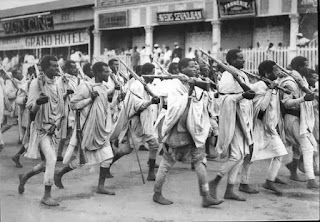The history of Europe is a bloody one. When they had the chance throughout history, they took advantage of the shortcomings. Transport it to Italy. How did he ascend, strike, and slaughter the Africans in 1930?
Benito Mussolini, a fascist Italian dictator, was at the height of his power and fame by the middle of the 1930s. He was determined to reestablish Italian hegemony over the African continent, which he saw as falling within his country's sphere of influence.
Italy simply left the League of Nations (the forerunner of the modern United Nations) when faced with sanctions, which were never fully implemented and demonstrated the body's inefficiency in preventing conflict. The Abyssinia Crisis of the 1930s was used as a pretext for Italian invasion of the Empire of Ethiopia.
Given that the Italians had (by the standards of the 1930s) a modern, mechanised force with a professional army, aeroplanes, artillery, tanks, and motor vehicles, this was a one-sided conflict in every sense of the word. Contrastingly, although having a sizable force, Ethiopian troops were primarily armed with swords or spears, and there were very few contemporary machine guns. The Ethiopian army could only raise 13 obsolete aircraft and 11 light armoured vehicles of all types, compared to the Italians' over 600 aircraft and 800 tanks for the fight.
In addition, the Italian deployment of poison gas during this conflict is notorious, with more than 100,000 Ethiopians dying from mustard gas. Ethiopian deaths during the roughly seven-month conflict totaled about 775,000 dead and wounded, compared to about 10,000 dead and 144,000 injured and wounded among the Italian forces and their native auxiliary.
Notwithstanding the fact that there were some Italian losses, the conclusion of the battle was always certain, despite the few tiny tactical triumphs Ethiopia had during the struggle. Ethiopians just lacked the strategic tools to defeat their enemy since the Italians were technologically so far ahead of them.




.jpeg)



0 Comments